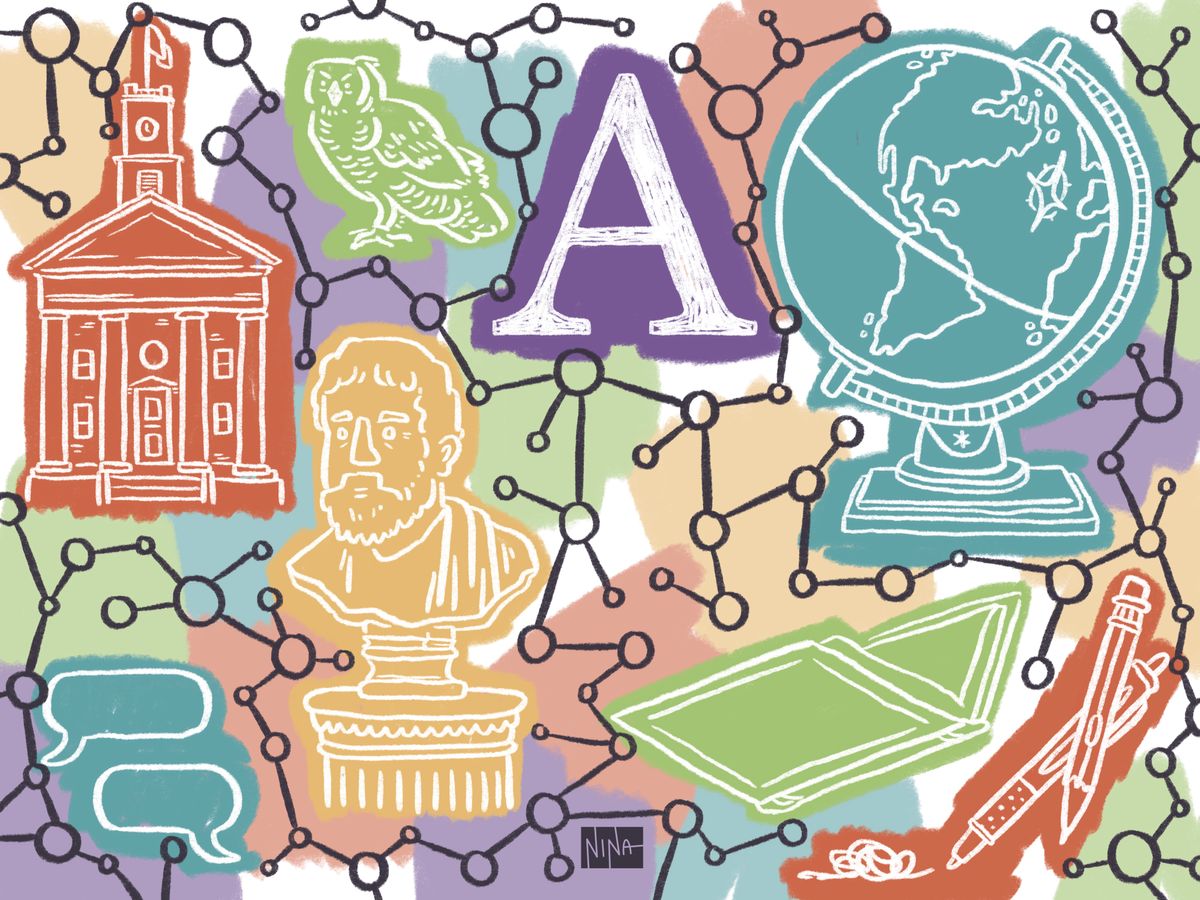Myth-Busting the Starving Artist: Reflections from AHA Program
Contributing Writer Morry Ajao ’26 recounts her experience in the Arts and Humanities in Action program, which raised her hopes for a career in the arts amidst a society preoccupied with financial security.

At the end of January, right before the start of this semester, I had the opportunity to be a part of the inaugural cohort of the Arts and Humanities in Action program, or AHA, as we all affectionately called it. Helmed by Professor of Law, Jurisprudence, and Social Thought and Political Science Austin Sarat and Executive Director of the Loeb Center Emily Griffen, the program was for the humanists walking a tightrope — certain of their love of artistic pursuits, yet afraid that their passions wouldn’t guarantee security in bank account balance.
Let me state the not-so-obvious: if you have a humanities degree, it is entirely possible to get a job, and it can be a very good one. Throughout this program, we met with multiple Amherst humanities professors and alumni who are proof of this exact sentiment.
I say “not-so-obvious” because if you’re like me and have ever vocalized a preference for a humanities major, you’ve likely been scoffed at or met with shocked expressions quickly buried under disingenuous smiles. We are often met with additional questions: “And what else?” or “Is that it?” Every career-related conversation turns into a police interrogation where you’re having the book thrown at you because you said you like to write!
As a kind of case study, I present Amherst alum Matt Collins ’94, who visited us during the program. Working as the head of product marketing at the marketing platform MNTN (pronounced Mountain), Collins explained that the liberal arts education that he received as an English major at Amherst College has directly enabled him to complete the job that he has today. At Amherst, he gained three critical skills that many employers across disciplines, himself included, seek in their candidates:
- The ability to acquire, consume, and synthesize information.
- The ability to generate new ideas, which he described as the “currency and life-blood of organizations.”
- The ability to communicate your positions clearly and persuasively: You should have something to say, and say it well.
These are skills introduced in every humanities course and honed in every humanities major. And Amherst College is among the best places to master these skills.
Though I was grateful to hear how the humanities can prepare students for hybrid humanities-STEM career paths like Collins’, I want to pursue a more traditional humanities career packed with every ounce of risk.
It may be naive, but like a fourth-place beauty pageant contestant, I want to make the world a better place through my art (I am aiming for world peace if I can!) At the very least, I don't want to end up working for some corporation where I inadvertently code some people deeper into poverty. Or, if I’m working at some firm in New York, visit the Vessel too often during my lunch breaks.
Going into the program I knew I wanted to be an author, but that didn’t mean I had nothing to gain from my experience. I found the conversations with faculty and alumni to be illuminating. I delved into cover letters, resumes, and the art of networking. But the greatest spark of the week occurred when Professor of Music and Director of the Center for Humanistic Inquiry (CHI) Darryl Harper spoke to us about the myth of the “starving artist.”
We all know the image quite well: a watermarked stock photo (or ironic sketch) of the tortured creative dressed in tattered clothing with their weight in dues, whose mind was simply not enough to sustain them in the real world.
Drawing from Lewis Hyde’s “The Gift: Creativity and the Artist in the Modern World,” Professor Harper explained that art exists in two economies: the market economy and the gift economy. Art can survive without the market economy, but it cannot live without the gift economy.
Art as a gift means it exists to bind us all together; it’s in service of other people.
His lesson was not about modifying your passions into something profitable in today’s context. Instead, it was for us artists, to understand the choices that we are making and the life we imbue our creations with.
You can make money in art was the presentation's ultimate point. The world will always need and benefit from it. Furthermore, the starving artist is a myth because an artist cannot truly starve if hunger is a measure of fulfillment; to make art is to be continually nourishing and nourished.
I had confidence, but I needed the inspiration to believe that anything I could accomplish might be meaningful to other people. I gained that through this program.
I am endlessly grateful to all of the professors and alumni, as well as Emily Griffen, Professor Sarat, and all those working behind the scenes who believe so deeply in me and my peers. The AHA program offers an authentic view of the real world, proving that there’s nothing humanities majors cannot do. Plus, they took us to the musical “Hamilton” in Boston, so it’s definitely worth it!




Comments ()